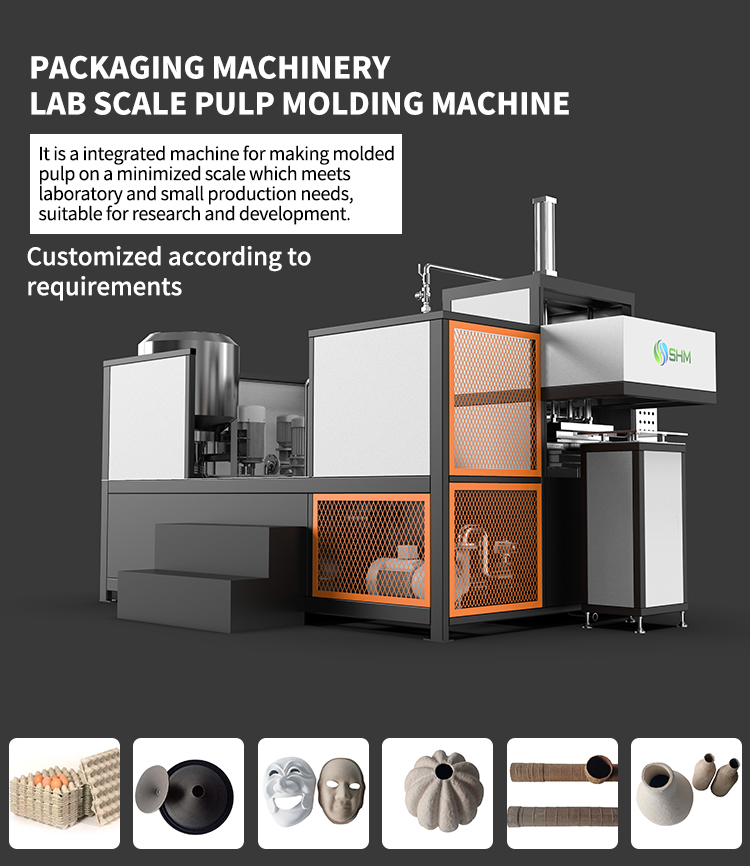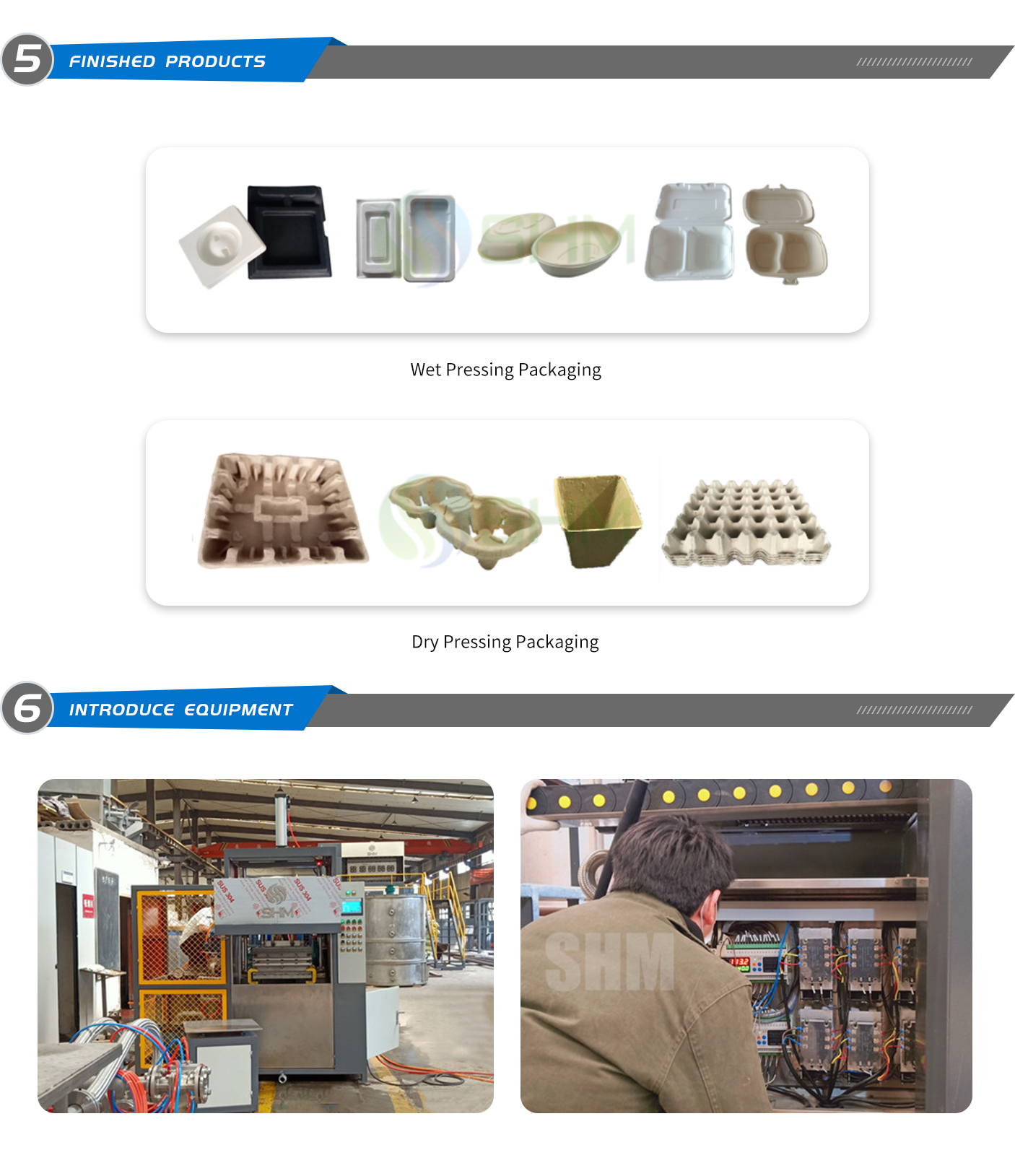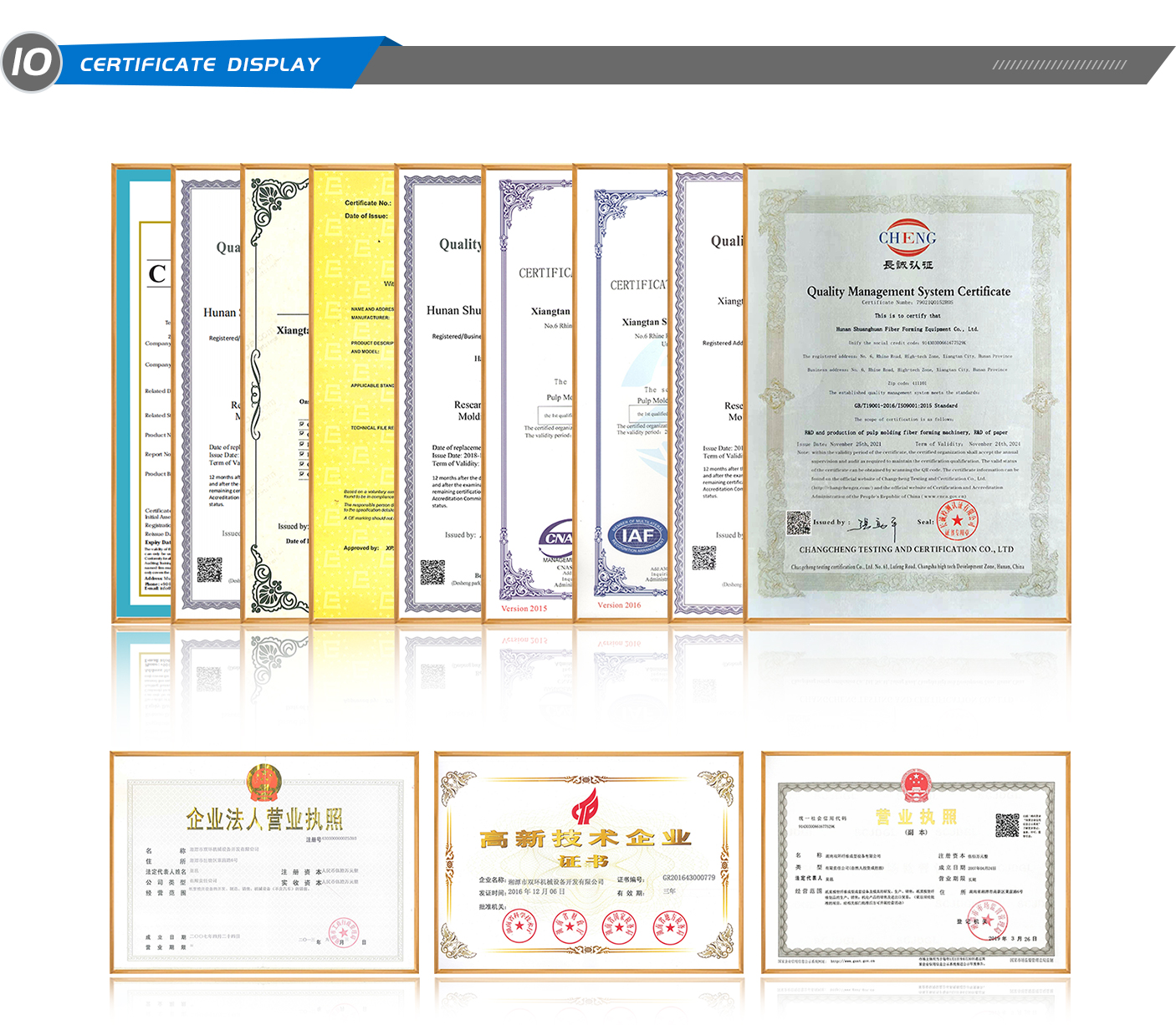
SHM molded pulp products manufacturing machine for laboratory is an integrated pulp molding machine that combines pulping, molding, hot pressing, vacuum system, and electronic control system into a single unit. This equipment streamlines the entire process, making it efficient and suitable for laboratory-scale production of molded pulp products.


SHM small pulp molded machine is a compact integrated solution, requiring no infrastructure. With its small footprint, user-friendly control, and durable stainless steel construction, this machine boasts a built-in air compressor and reservoir, ensuring cost-effectiveness and energy efficiency. Small business machine ideas for small-scale production of degradable paper pulp packaging and laboratory proofing, it offers a convenient and efficient solution.

SHW-360-1:
Size: 3200*1800*2700mm, equipment area 6m².
Efficiency: 1-6times/minutes
Platen size: 550*450mm
Product sample: 132*222mm food tray, 4 pcs/mold
SHW-360-2:
Size :4100*2100*2700mm, equipment area 9m²
Efficiency: 1-6times/minutes
Platen size: 550*450mm
Product sample: 132*222mm food tray, 4 pcs/mold
SHW-360-3:
Custom all in one pulp molding machine with hot-press function.
SHW-720:
Size:7100*2800*2980mm,equipment area 21.3m²
Efficiency:1-6times/minutes
Platen size:1200*800mm
Product sample:132*222mm food tray, could be 14 pcs/mold

How to make moulded pulp?
Molded pulp is a versatile and eco-friendly material that can be used to create a variety of products such as packaging, trays, and containers. Here's a general guide on how to make molded pulp:
1. Ingredients/Tools:
Pulp Material:
Common sources include recycled paper, cardboard, or other fibrous materials.
The material needs to be broken down into pulp form. This can be achieved through processes pulping
Water:
Used in combination with the pulp to create a slurry.
Mold:
The mold can be made of AL or silicone, depending on the application and the production scale.
Moulding Equipment:
This includes machinery for forming, transferring, and drying the molded pulp. These may include forming moulds, transfer moulds, and drying press moulds.
Heating System:
For systems that require drying, a heating mechanism is essential.
Distance Control Mechanism:
If your process involves adjusting the thickness of the molded pulp parts, you may need a distance control mechanism.
2.Procedure:
Prepare the Pulp:
Break down the chosen fibrous material into pulp form. This can be done through shredding, pulping, or blending the material with water to create a slurry.
Forming Process:
Pour the pulp slurry into the forming mold, shaping it according to the desired product. The mold will give the pulp its initial shape.
Transfer Process:
Move the molded pulp to a transfer mold, allowing excess water to drain.
Drying Process:
If your application requires it, move the molded pulp to drying press moulds or a drying system. Apply heat to remove excess moisture and solidify the molded shape.
Finishing:
Once dried, the molded pulp product can be removed from the molds. Depending on your requirements, you may need to trim or finish the product.
Optional Additives:
If you're using additives, introduce them to the pulp during the process, using a dosage system.
Quality Control:
Inspect the final product for quality, making sure it meets the desired specifications.
Remember, the specific steps and equipment may vary based on the scale and complexity of your production system. Always follow safety guidelines and regulations during the manufacturing process.



SERVICE
1. Engineering research and technical consultation;
2. Manufacture;
3. Project Schedule;
4. Preparation of documents and drawings;
5. Training of maintenance and operation personnel;
6. Guide Assembly line installation;
7. Electrical and mechanical design;
8. System integration;
9. System test and handover;
10. One year of after-sales support;
11. Spare parts are included;
12. Installation within the scope of supply;
13 Operation support for the buyer’s factory;
14. System test after equipment delivery;
15. Documentation of assemble line.
